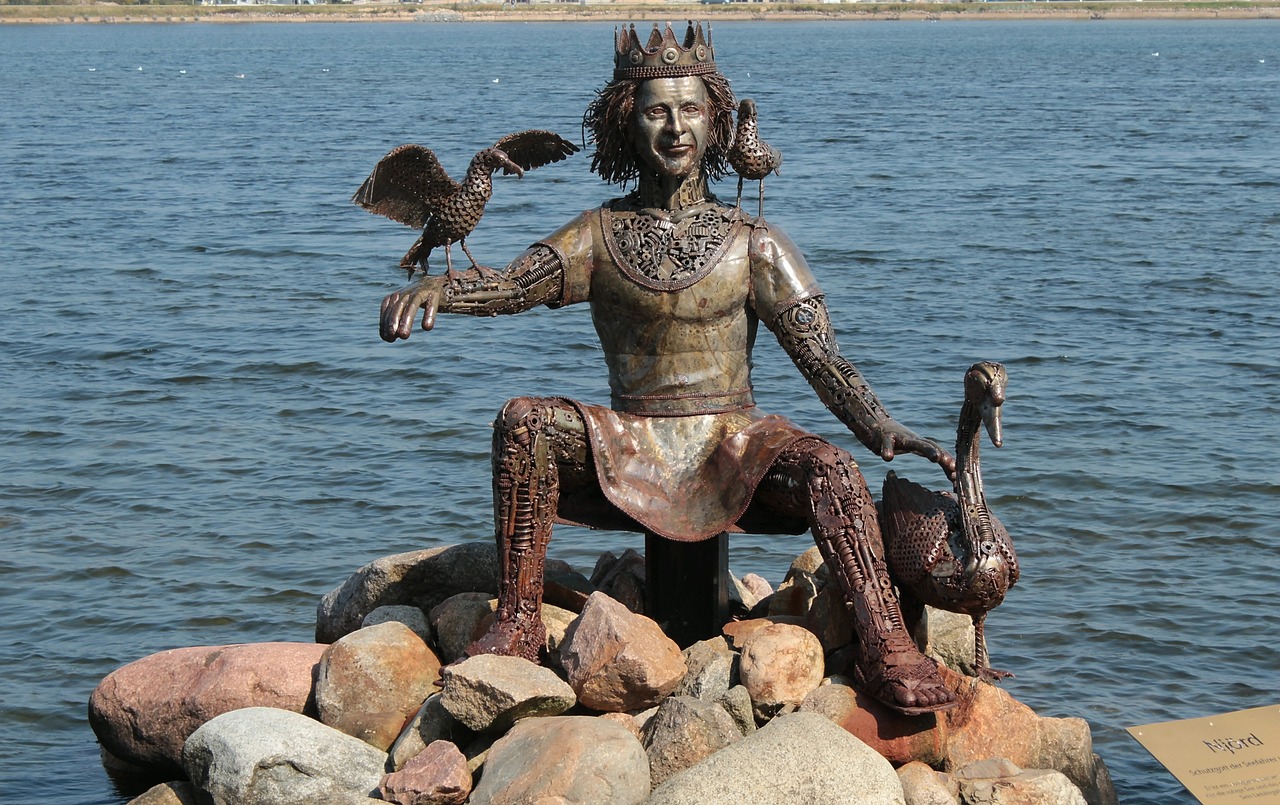Njord: The Norse God of the Sea and Prosperity
Njord, a significant figure in Norse mythology, is often identified as the god overseeing the sea, wind, and wealth. Belonging to the Vanir, a group of fertility deities, his influence was pivotal in a culture reliant on maritime endeavors and trade. Throughout history, Njord was revered primarily by fishermen and sailors, who turned to him for protection during perilous voyages and with hopes of abundant catches.
While not as prominent as other deities like Odin, Thor, or Loki, Njord’s associations with prosperity resonate deeply within the ancient Norse community, where the wealth of fishing, trade, and agriculture formed the backbone of survival and success.
Who Was Njord?
Njord (sometimes anglicized as Njorth) embodied the essence of seafaring, representing not only ships and navigation but also the material wealth derived from the sea. His dominion extended beyond the aquatic realm; he was linked to agriculture and the bounty of the land, showcasing his multifaceted nature.
The ancient Norse invoked Njord for various material needs, whether it was land for farming or vessels for trade. His worship persisted long after the Viking Age, even as Christianity started to dominate the region’s landscape.
Njord purportedly resided in Noatun, a grand hall connected to Asgard, symbolizing safety and calm over turbulent waters. The historical references to Njord emerge mainly from the 13th-century Prose Edda and Poetic Edda, rich collections of Norse mythology documented in medieval Iceland.
The Broader Context of Sea Gods
Njord was not alone in his governance over the seas. Other deities, like the Germanic goddess Nehalennia, also claimed dominion over maritime realms. Nehalennia, celebrated between the 2nd and 3rd centuries C.E., was associated with trade and the North Sea, possibly indicating shared traits or influences with Njord, although their worship occurred during different periods.
Two more deities, Aegir and Ran, were contemporaries of Njord. Aegir, a jötunn rather than a god in the traditional sense, represented the very embodiment of the ocean. In contrast, Ran epitomized the risks of the sea, ensnaring sailors who perished in the tempest. Despite their differing roles, there is no recorded rivalry between them. All parties maintained their respective domains in the mythological ocean.
Njord within the Vanir
The Vanir, often less known than their Aesir counterparts, were characterized by a focus on magic and fertility rather than conflict. Njord was principal among the Vanir, alongside his children, Freyr and Freyja. His leadership role became prominent during the Aesir-Vanir War, a conflict that arose either from jealousy or cultural clashes. Njord was a key negotiator in establishing peace and ultimately became a figure of unity between the two clans of deities.
Post-war, Njord and his children lived among the Aesir, forming an intersection of these two divine lineages that enriched Norse mythology.
Njord’s Challenging Family Dynamics
Njord’s union with the jötunn goddess Skadi is notably marked by strife. Their marriage resulted from a twist of fate—Skadi chose Njord, mistaking his appealing feet for those of the handsomest god, Baldr. Their differing affinities became apparent as Njord preferred the warmth of the sea while Skadi cherished the cold, mountainous terrain of Thrymheim. Their attempts at compromise failed, leading Skadi to abandon Njord and return to her familial domain, leaving their union childless.
Connections to Nerthus
Exploring Njord’s relationship with Nerthus, another goddess of fertility and prosperity, reveals intriguing ties. Ancient accounts suggest they shared similar origins, possibly hinting at familial connections. Both deities’ meanings seem to stem from proto-Germanic linguistics, imbued with symbols of strength and fertility.
Tacitus, a Roman historian, documented worship practices surrounding Nerthus, emphasizing her role in agricultural abundance, which paralleled Njord’s maritime wealth. Their connection signifies a cultural interweaving of land and sea that reflects the Norse worldview.
The Siblings or Same Deity Debate
The sibling theory between Njord and Nerthus presents an interesting perspective, with their linked nomenclature fueling speculation. An alternative theory postulates that Nerthus might be an earlier feminine embodiment of Njord—evolving from a goddess of the earth into Njord’s male persona reflecting a culture increasingly defined by seafaring.
Njord’s Role in Funerary Practices
As the god of navigation, Njord may have played a role in funerary rites connected to Viking ship burials. Historical accounts hint at complex burial practices that included ship loading with treasures for the departed. While burning boats also featured in known ceremonies, Njord’s divine jurisdiction over ships could suggest his influence guided the souls on their last journey.
Njord: Surviving Ragnarok
Despite the cataclysmic events of Ragnarok in Norse mythology, where most gods meet disaster, Njord’s fate appears less certain. Though many gods perish, there are brief mentions of Njord’s return to Vanaheim, hinting he was among those who survived the mythological apocalypse.
Conclusion
In summary, Njord’s role in Norse culture is profoundly significant, illustrating essential connections to maritime activities, agriculture, and wealth. Although historical details may be scarce, Njord’s influence permeated various facets of life, embodying the central economic principles of society. He remains a testament to the Norse worldview that intertwined survival, prosperity, and the natural world, ultimately cementing his place in two divine pantheons.



